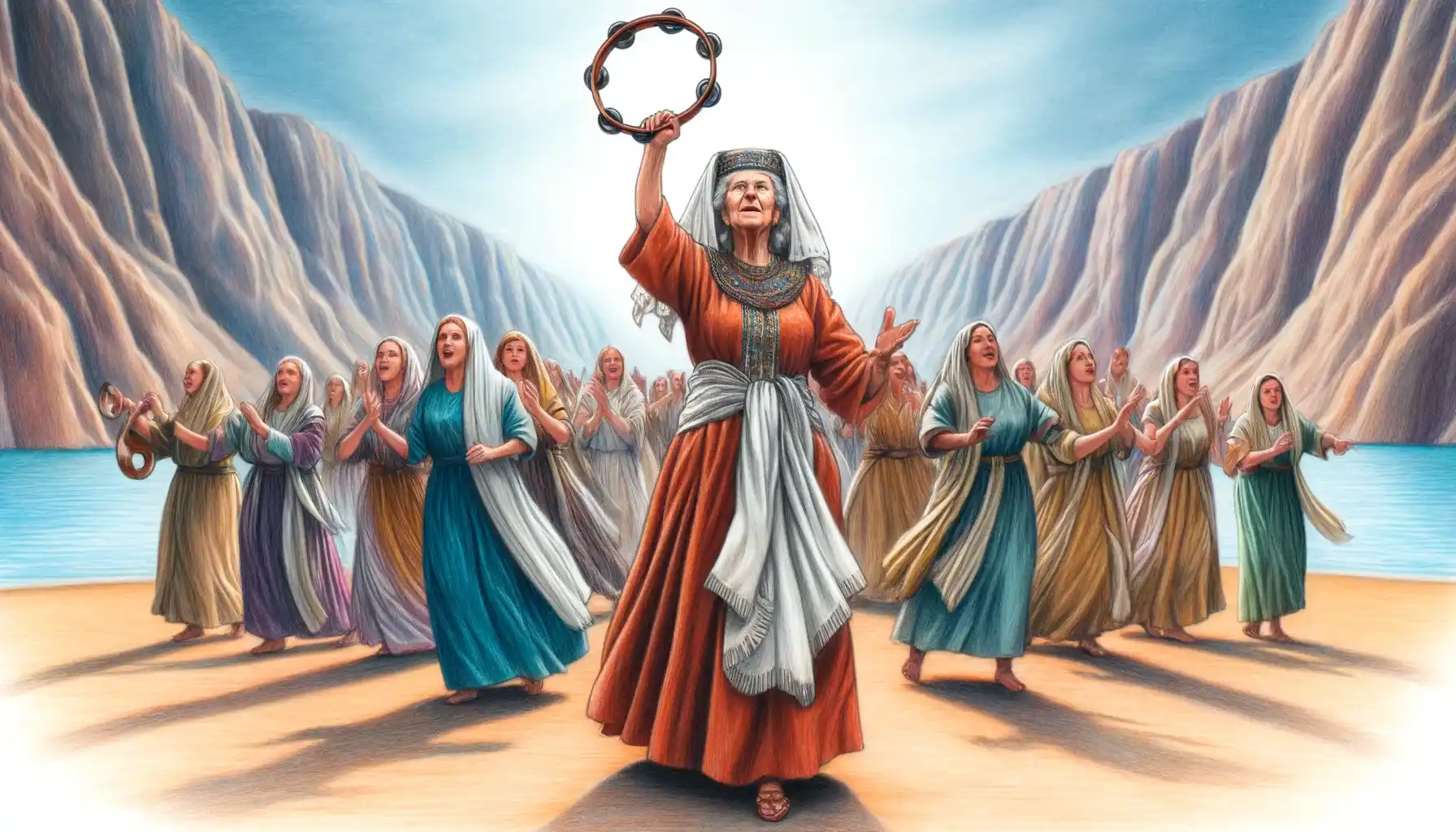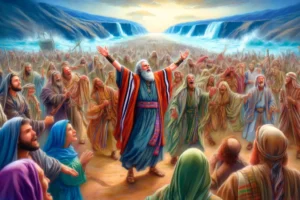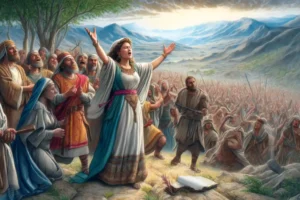
The Song of Miriam
“The Song of Miriam,” found in Exodus 15:20-21, is a brief yet significant piece of biblical poetry. Here are some quick facts about this celebratory song:
- Authorship and Performers: The song is attributed to Miriam, the prophetess, sister of Aaron and Moses. She leads the women of Israel in this song and dance.
- Historical Context: It is sung after the Israelites crossed the Red Sea and witnessed the destruction of the Egyptian army, marking a pivotal moment in their Exodus from Egypt.
- Content: The song itself is very brief, consisting of just a couple of verses that celebrate the triumph over the Egyptians and God’s deliverance.
- Celebratory Actions: Miriam takes a tambourine in her hand, and all the women follow her with tambourines and dancing, reflecting ancient celebratory customs.
- Theological Significance: This song underscores the theme of divine salvation and is a direct response to the miraculous events witnessed by the Israelites.
- Cultural Impact: “The Song of Miriam” is one of the oldest examples of a victory song in the Bible and highlights the role of women in religious and cultural expressions of joy and gratitude.
- Liturgical Use: The song has been incorporated into Jewish liturgical practices and is part of the “Song of the Sea” section in the Passover Haggadah, underscoring its enduring religious significance.
“The Song of Miriam,” recorded in Exodus 15:20-21, is a powerful expression of joy and thanksgiving, representing one of the earliest examples of Hebrew poetry in the Bible. This song, although brief, offers profound insights into the communal and theological responses to God’s deliverance during the Exodus. Here’s a detailed analysis of its elements and significance:
Historical and Cultural Context
After the Israelites escaped from Egypt, they crossed the Red Sea, which God miraculously parted to allow them passage. Following the crossing, the Egyptian army pursued them but was ultimately destroyed when the waters returned to their place. This miraculous deliverance is the backdrop against which Miriam, sister to Aaron and Moses, sings her song.
Composition and Content
Miriam’s song is concise, comprising just two verses, yet it encapsulates a monumental moment of deliverance. The text reads:
“Sing to the Lord, for he is highly exalted. Both horse and driver he has hurled into the sea.”
This excerpt not only reflects a victory song but also serves as a theological affirmation of God’s supremacy and protective power over Israel. The use of parallelism—a characteristic feature of Hebrew poetry—is evident, emphasizing the triumph over the oppressors.
Role of Miriam
Miriam is identified as a prophetess, the first woman in the Bible to be given this title, underscoring her significant spiritual and leadership role within the Israelite community. Her leading the women in song and dance with tambourines reflects the participatory and celebratory traditions of ancient Israelite culture, emphasizing the communal aspect of worship and thanksgiving. This portrayal of Miriam also highlights the active role of women in religious expressions during pivotal moments in Israelite history.
Theological Themes
The song underscores several key theological themes:
- Divine Salvation: It celebrates God’s intervention on behalf of Israel, a theme central to the identity and faith of the Israelite people.
- God’s Power: The depiction of God hurling both horse and driver into the sea conveys His control over nature and nations, reinforcing His role as the ultimate protector and savior.
- Praise and Worship: The song is an act of worship, an integral response to witnessing God’s salvation, and sets a precedent for future generations to remember and honor God’s deeds.
Cultural and Liturgical Impact
“The Song of Miriam” has resonated throughout Jewish history and liturgy, marking its importance not only as a scriptural text but also as a component of religious practice. It is part of the “Song of the Sea” read during the morning service in the Passover liturgy, reminding the faithful of God’s deliverance and the joy of redemption.
Conclusion
Though brief, “The Song of Miriam” is a potent articulation of victory, joy, and theological affirmation. It not only commemorates a significant historical event—the Exodus—but also celebrates the foundational themes of trust in God’s salvation, the power of communal worship, and the influential role of women in the spiritual life of the community. This song, therefore, serves not just as a historical recount but as a lasting testament to the enduring themes of faith and deliverance in the Judeo-Christian tradition.
Leave A Reply
You must be logged in to post a comment.




1 Comment